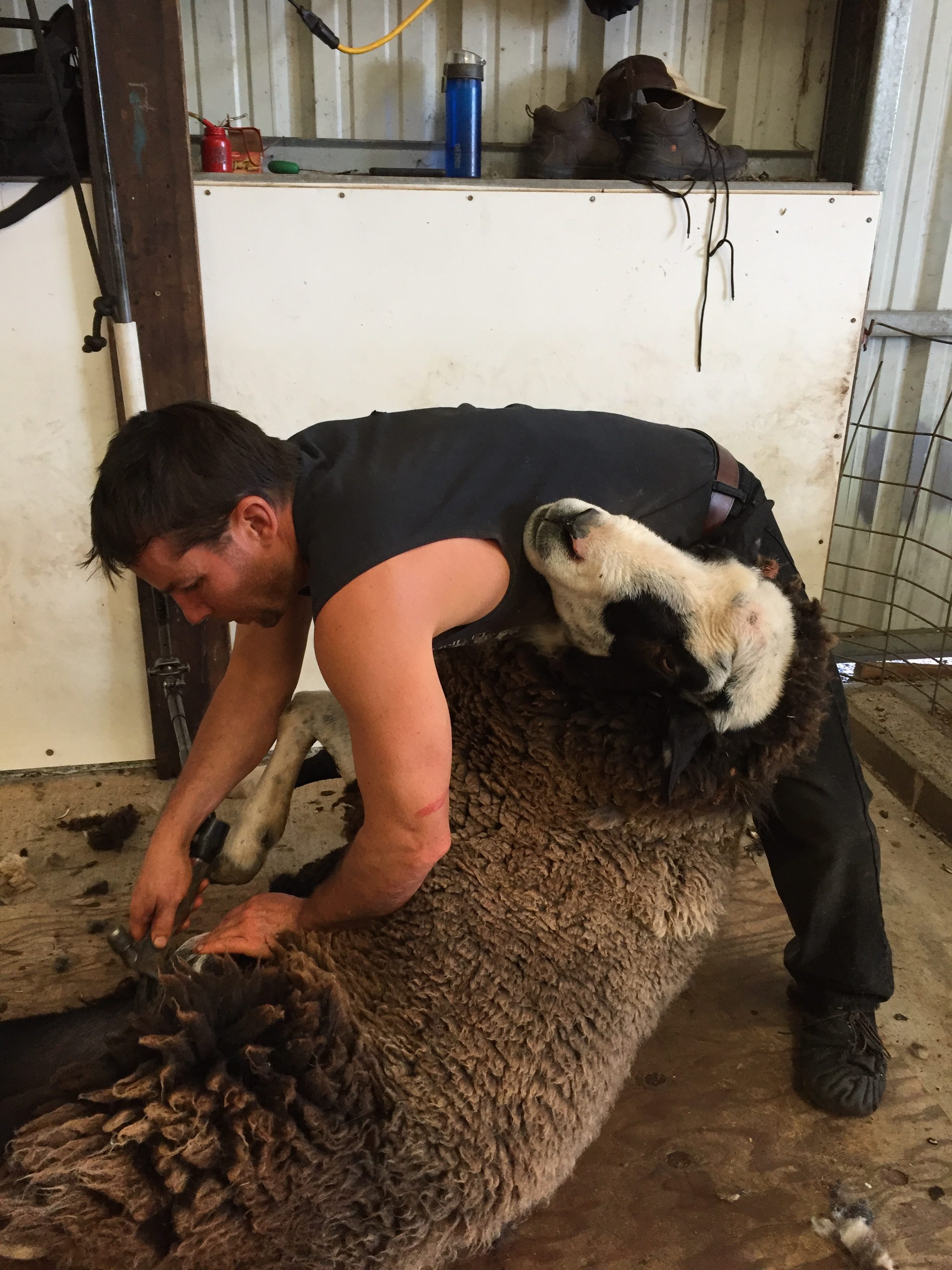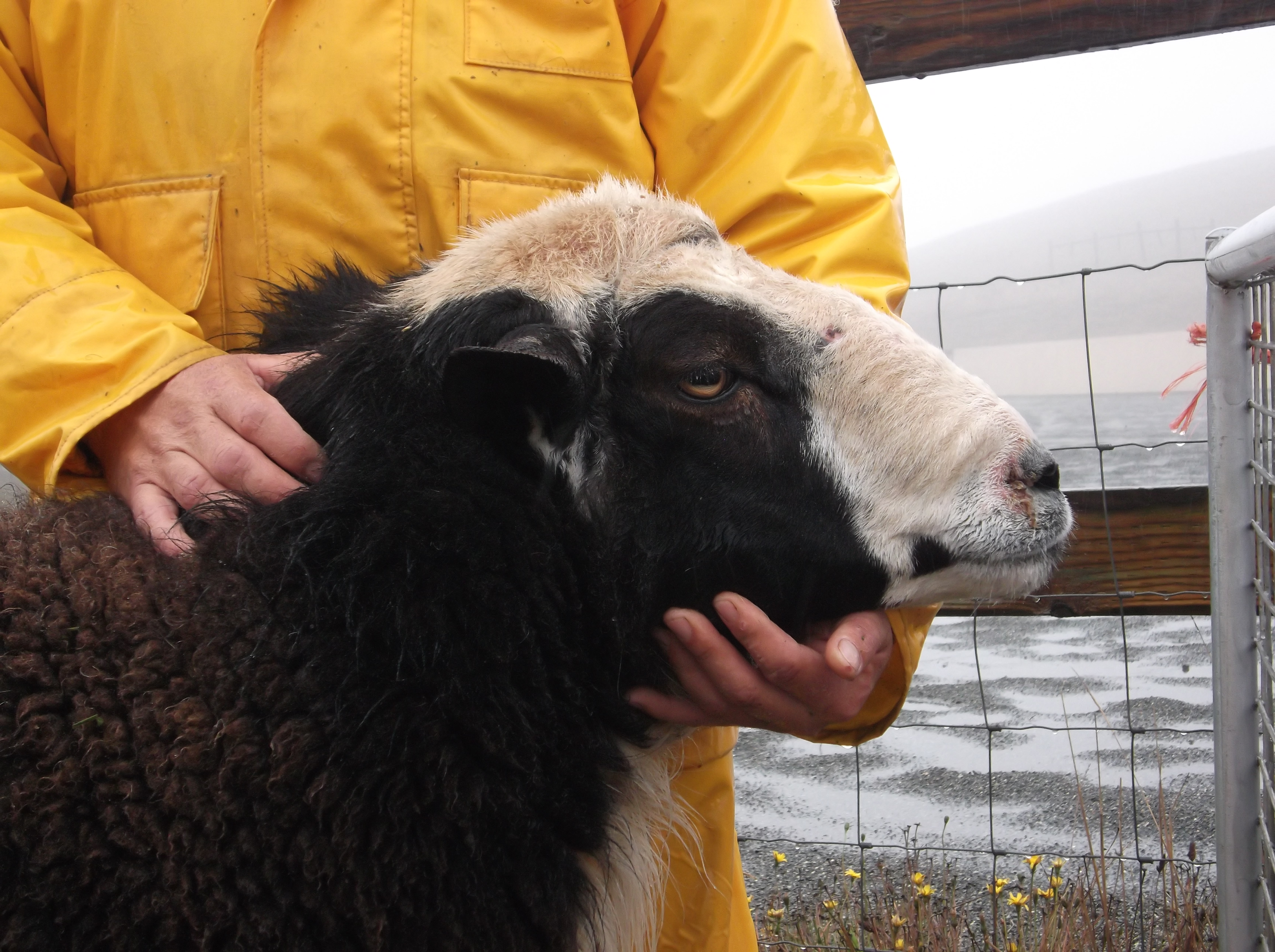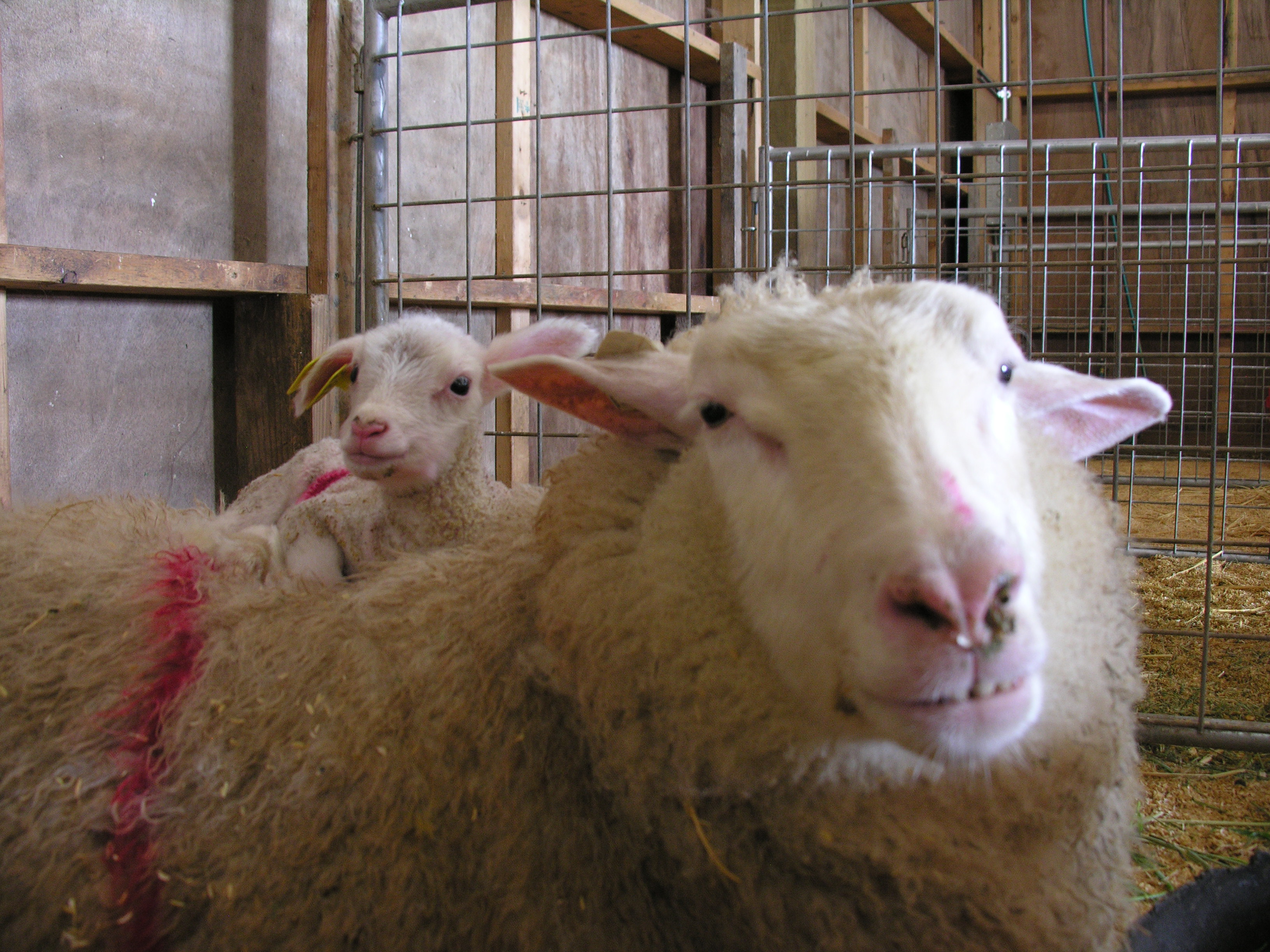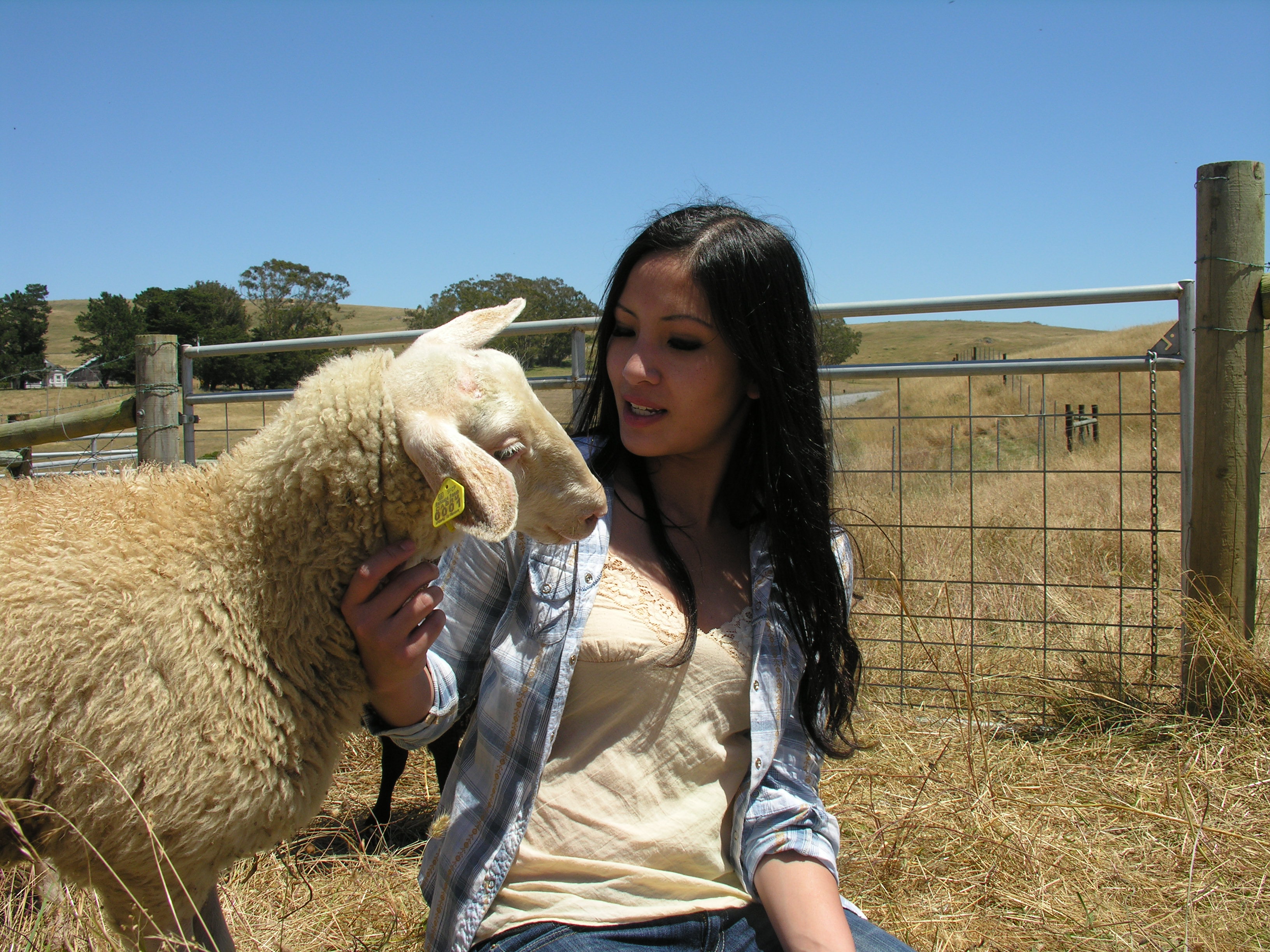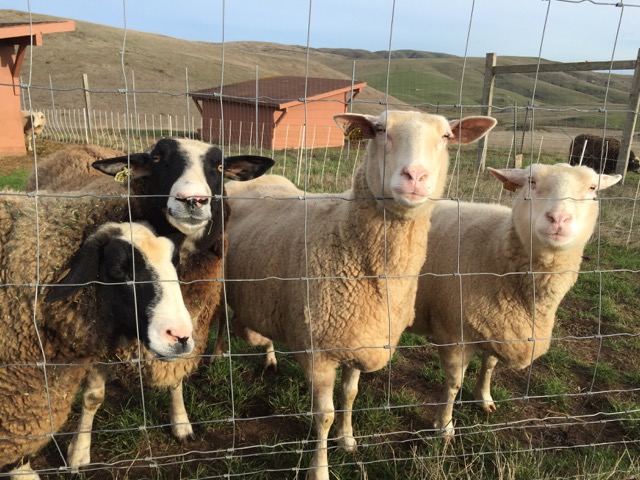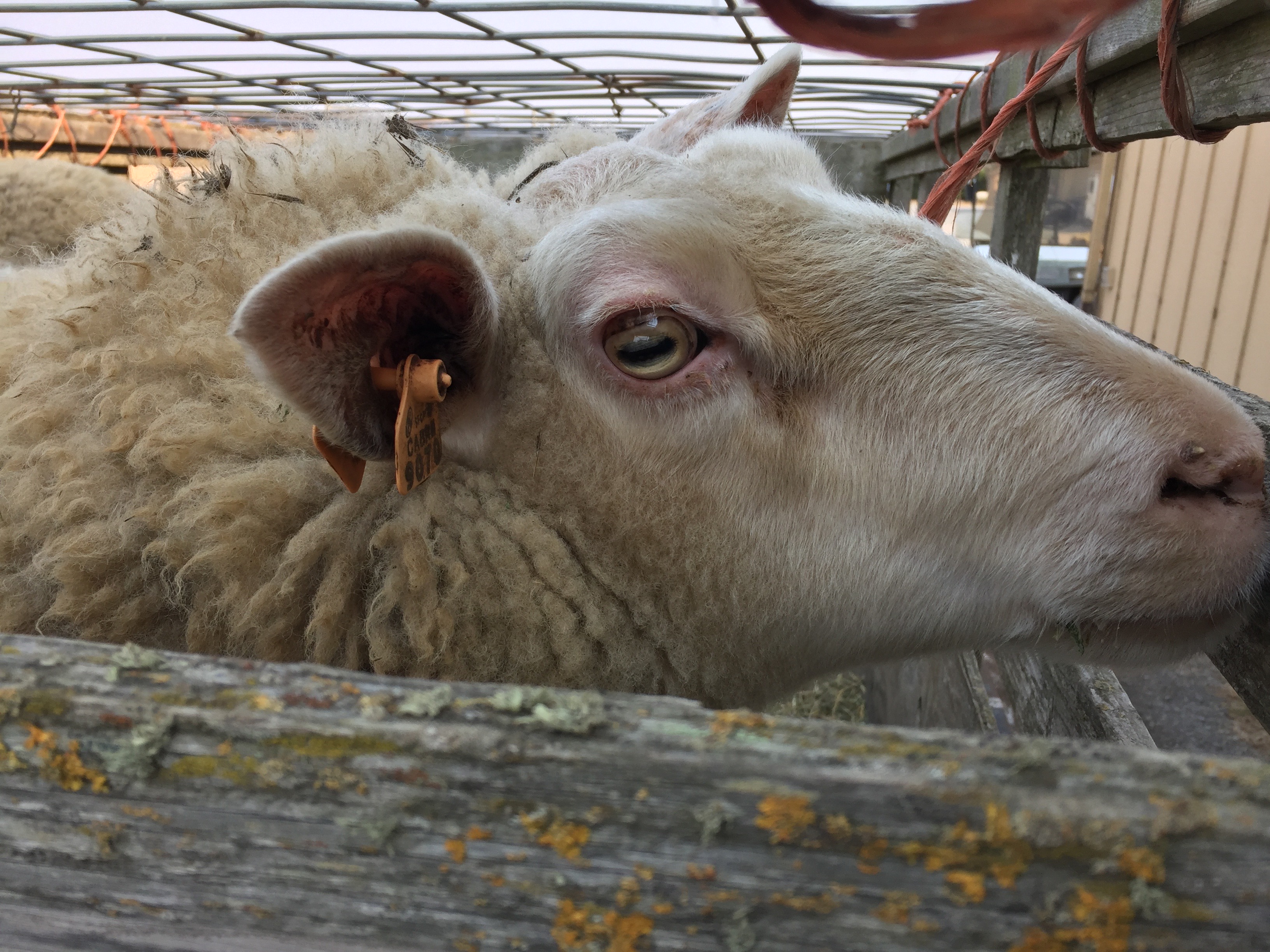Last week, in the midst of the horrible fires up in Sonoma and Napa counties, we had our own little sadness here at the ranch, as we said goodbye to three of our dear old friends, Panda, Emy and Shorty.
Panda was one of the first lambs born at our ranch in 2008. His mother, Elsbeth, was a beautiful big East Friesian ewe and a good milk producer, and his father, Bi (pronounced “Bee,” Basque for the number two) was a handsome black Katahdin ram. Panda was a beautiful lamb, named for his black eye-patches. He grew into a huge ram—he must have been at least 350 pounds–and turned out to be a great dairy sire. Although his daughters were ¾ Katahdin, they generally milked better than their high-percentage Friesian mothers. Panda threw BIG lambs, and this was quite a problem in his first season, when we bred him to our E. Friesian ewe lambs that came from Everona Dairy in Virginia. Those ewes were pretty small in stature, and that first year we had a really difficult lambing season, because so many of them had HUGE single lambs, fathered by Panda. In later years when he was bred to older ewes, they tended to have twins or triplets and although Panda’s spawn were still big (think: 12 pound triplets!) at least the mothers were a bit bigger and the lambs not as big as those first-year singles. Panda was a pretty good guy most of the time, but he did have his ornery side, and Lolo, Ignacio and I each got rammed by him exactly once, when we were foolish enough to turn our backs on him. (That was an example of one-trial learning.) As a young ram, Panda had some spectacular fights with his pasture mates Elgin, Dan and later Lucky Boy, but in his mid-years he was pastured peacefully with Lucky and Bat (I called them the “Three Amigos”), and after Lucky and Bat both passed on, Panda was pastured with Prince Harry. Right up until last Friday we would see the two of them actually curled up together, their heads resting on each other. Our shearer, John Sanchez, always commented on what a gorgeous ram Panda was, and watching John shear him was always fun—Panda’s head alone seemed almost half the size of John. Panda was such a great sire that we kept a lot of his offspring for their productivity and size, and so he wound up being father or grandfather to most of our flock. Last season there were only two ewes in the flock who were unrelated enough to him that we could breed him to them. In the past year we had noticed that Panda had some kind of oral cancer, and while he was still able to eat well and seemed to be enjoying life, it appeared to have infiltrated his nasal passages and he began having intractable nosebleeds. We decided the humane thing was to take Panda to be put down last Friday, when the rest of the rams went in with the ewes to breed. Panda was almost 10, which is pretty old for sheep. He was a great guy and we will really miss him.
Shorty was a special personality from the very beginning. She was the first lamb born in 2010, and so got the distinctive tag number 0001. Her mother, Evangeline, was one of my original East Friesians with silky faces, prominent amber eyes and prodigious milk production. Shorty was an adorable little funny-faced lamb who loved to sleep on her mother’s back. Evangeline had a very tough convalescence after lambing that year and we had to supplement her lambs. Linda would approach the little lamb with the milk bottle, saying “here Shorty! here Shorty!” and the name stuck. Shorty became a bottle lamb, but her brother became a mooch, prompting my friend Pat O’Keefe to call them “Shorty and the Mooch,” sung to the tune of Elton John’s “Benny and the Jets.” Ironically Shorty grew into a very tall ewe, very “dairy-type” (i.e. skinny, putting all her calories into milk production) with a long thin face, her mother’s amber eyes and legendary milk production. She had poor udder conformation and became very hard to milk in later years–the milker needed to hold her udder up for the entire time. While we normally would have milking units on several ewes at once, that wasn’t possible with Shorty, leading to my version of the Zen aphorism: “when milking Shorty, only milk Shorty.” Once I was trying to reach Lisa in the parlor and I called and called until finally she answered the phone sounding exasperated and and said, “I couldn’t pick up–I was milking Shorty!” I thought of retiring Shorty for several years, but couldn’t bring myself to do it because she was always the top or second-best producer, producing well over 1000 pounds a season, after nursing her lambs. Because of her poor udder conformation, we stopped saving her daughters, but before that she gave us a very nice set of triplet girls. They all had great milk production and long slender faces like their mother’s (including one Lisa named “Why the Long Face?” Shorty retired in 2016 and was very happy as a pet living at my house. Shorty had developed quite a few squamous cell carcinomas in her later years, as the white sheep often do. When we were shearing on October 4th, we discovered that she had a very nasty advanced squamous cell tumor on her udder that had started to go necrotic. So we decided that she should join Panda on his trip to the vet in Cotati.
Emy was always a character. She was one of a set of triplet white girls born to Emily, who was one of my original East Friesian ewes. Emily, like all those original ewes, was beautiful, with prominent light-amber eyes and a silky face. Emy and her sisters inherited their mother’s beauty, her prodigious milk production, and her high-pitched baaa, which we called “the Friesian scream.” I kept all three of those triplet girls. Emy was the one who distinguished herself with an impish personality like her mother’s. She was forever putting her head through the fence to graze, and often getting it stuck. She started as number 9012, but soon pulled out that ear tag and got number 9068. Countless times I would find her with her head in the fence and have to free her, other times I would see the skinned eyebrows acquired as she pulled her head out on her own. And she kept losing ear tags to these adventures. She graduated from 9068 to 9069, then finally 9070. But her mischief didn’t end with putting her head through the fence. Once day she came in for the afternoon milking with a huge laceration of her udder. I was making cheese, and Lolo needed to do the milking, so I left Lisa flipping cheeses (something she’d never done alone) while I raced to the vet in Cotati with Emy in the trailer, to get her stitched up. Emy retired from the milking parlor to the “pet flock” after the 2015 season, and quite liked being a pet. She always came running to see me at the fence, and loved her corn treats. Like Shorty, Emy had a lot of squamous cell carcinomas and on October 4th we discovered a nasty advanced one on her udder similar to Shorty’s and we knew that Emy was also at the end of her road.
I believe that part of our pact with our pets is that we will take responsibility to end their lives when it is time. But that doesn’t make it any easier to say goodbye to our good old friends.


